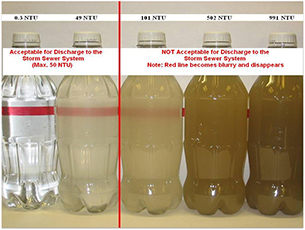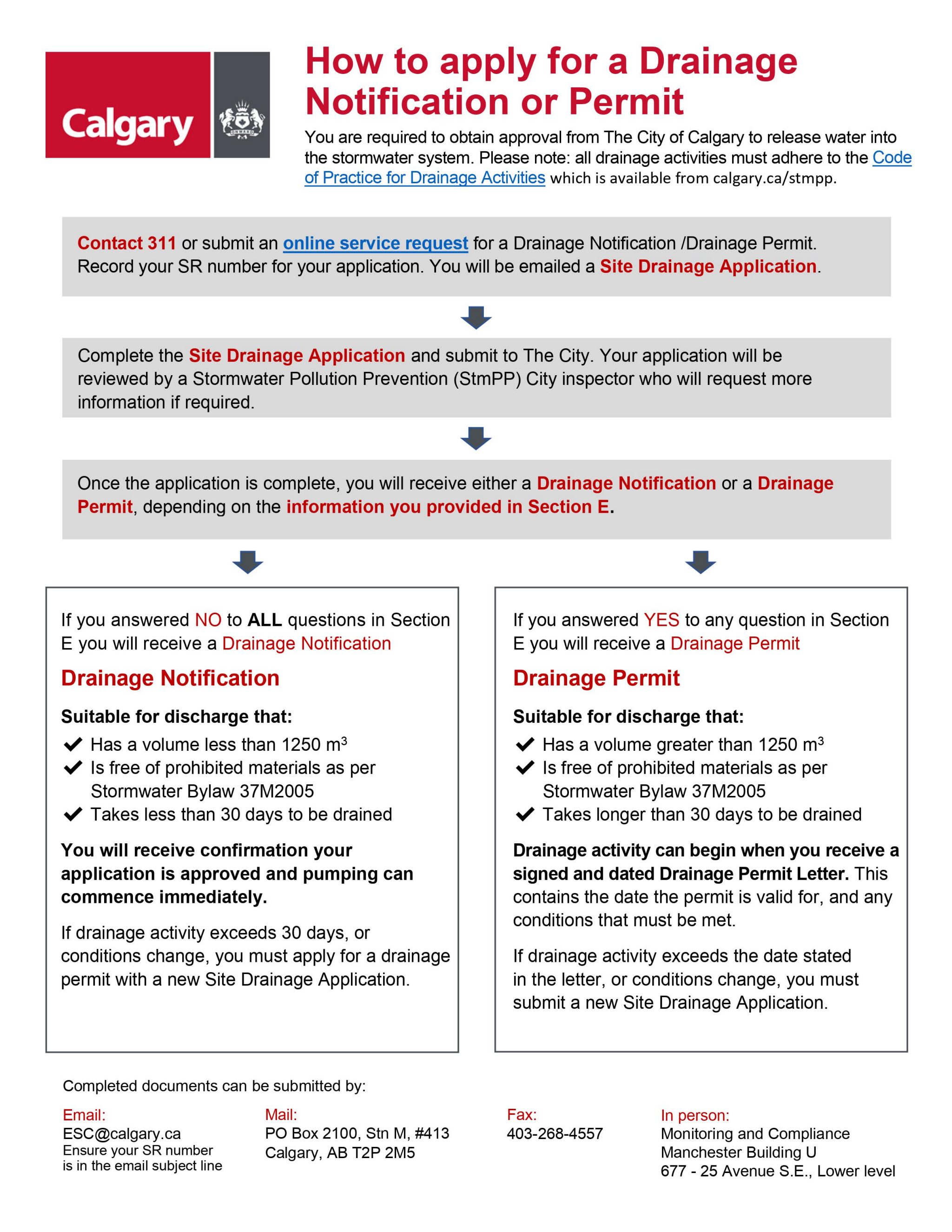Stormwater drainage notifications and permits
Within the city of Calgary, approval, in the form of a permit or notification, is required to directly or indirectly release water into the stormwater system (including roadways and swales).
You may need a drainage permit or notification for:
- Water that has collected in an excavation or trench which must be removed to continue work;
- Surface rainwater runoff that has collected on your construction site which needs to be removed;
- Pumping any potable drinking water (must be de-chlorinated);
- Fire flow or hydrant testing (must be de-chlorinated);
- Water that has collected in a parking lot, parkade or parkade excavation;
- Draining ground water cisterns prior to permanent connection to the stormwater system;
- Commercial snow melting;
- Commercial or industrial stormwater management ponds; or
- Any other activity that requires you to release water into the stormwater system.
Our Nuisance Water Disposal Flowchart can be used to help you determine what kind of permit you will need if you are releasing water from your site.
Once you have confirmed you are eligible to release into the stormwater system, use this chart to determine if you require a drainage permit or notification.
For more information regarding these permits, view the Stormwater Bylaw, Code of Practice for Drainage Activities, Site Drainage Application or contact 311.
Apply and Submit Drainage Application Online
Click on image to enlarge.
Note: You may be required to provide supplementary water quality information as part of a Drainage Permit Application. Please use the Laboratory Water Quality Results Table (Excel spreadsheet) to summarize results and provide with the original lab report(s). Discuss testing requirements with the City inspector.
Activities that do not require disposal approval
The following kinds of activities do not require approval to dispose of water in the stormwater system:
- Foundation drainage from completed construction collected below ground, but not including groundwater during construction activities;
- A swimming pool or fountain that is less than 3,000 litres and does not contain treatment chemicals;
- Potable irrigation or wash water (no detergents or cleaners) from single family or semi-detached homes; or
- Water used to extinguish fires.
Substances that are not allowed to enter the stormwater system
Even with a permit there are some substances that should never be put into the stormwater system. These prohibited items include:
- Soil, sediment, waste or other solid matter;
- Fecal matter, animal waste, dead animals or animal parts;
- Fats, cooking oils and greases;
- Gasoline, motor oil, transmission fluid and antifreeze;
- Solvents or paints;
- Cement or concrete waste;
- Sawdust, wood, fibreboard or other construction material;
- Yard waste;
- Hazardous substances;
- Medical or industrial waste;
- Soaps or detergents;
- Water from hot tubs;
- Any substance that emits an odour; and
- Fish and other aquatic plants or animals.

Water with a nephelometric turbidity unit (NTU) reading of greater than 100NTU may not be discharged to the storm drainage system. Water to the left of the red line meets the NTU limits set out in the Code of Practice for Drainage Activities while those to the right of the line do not.


